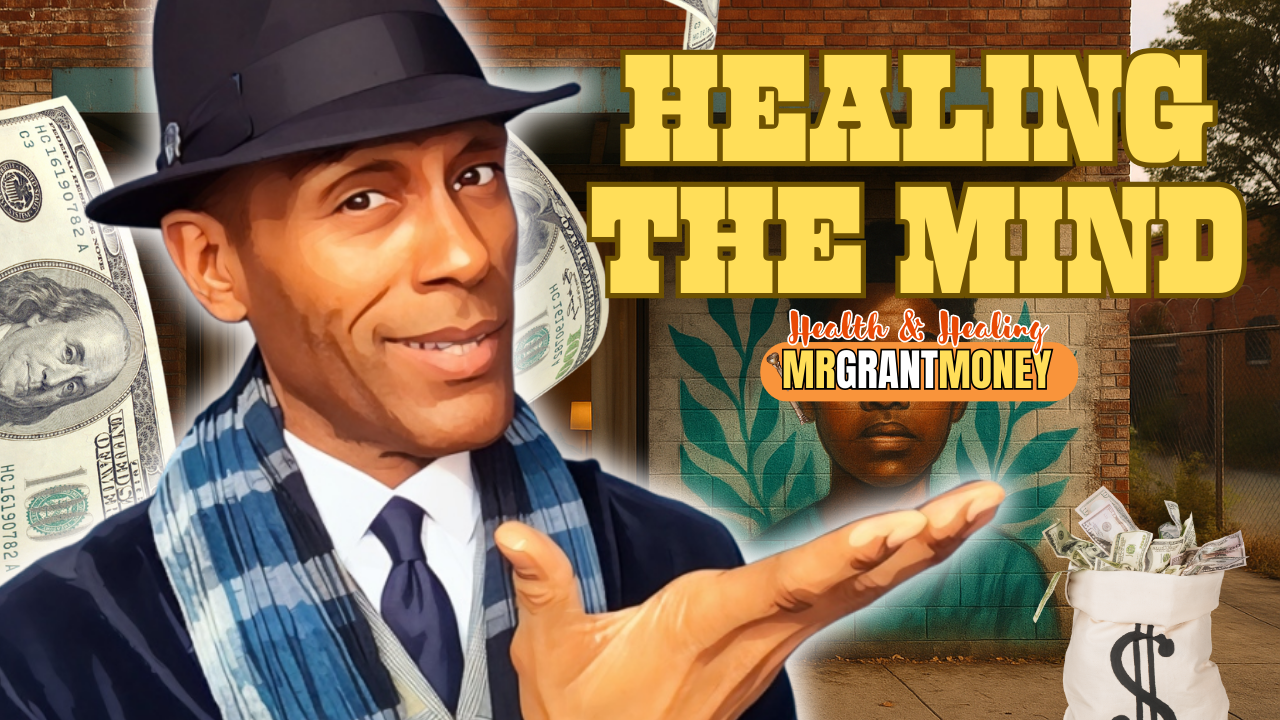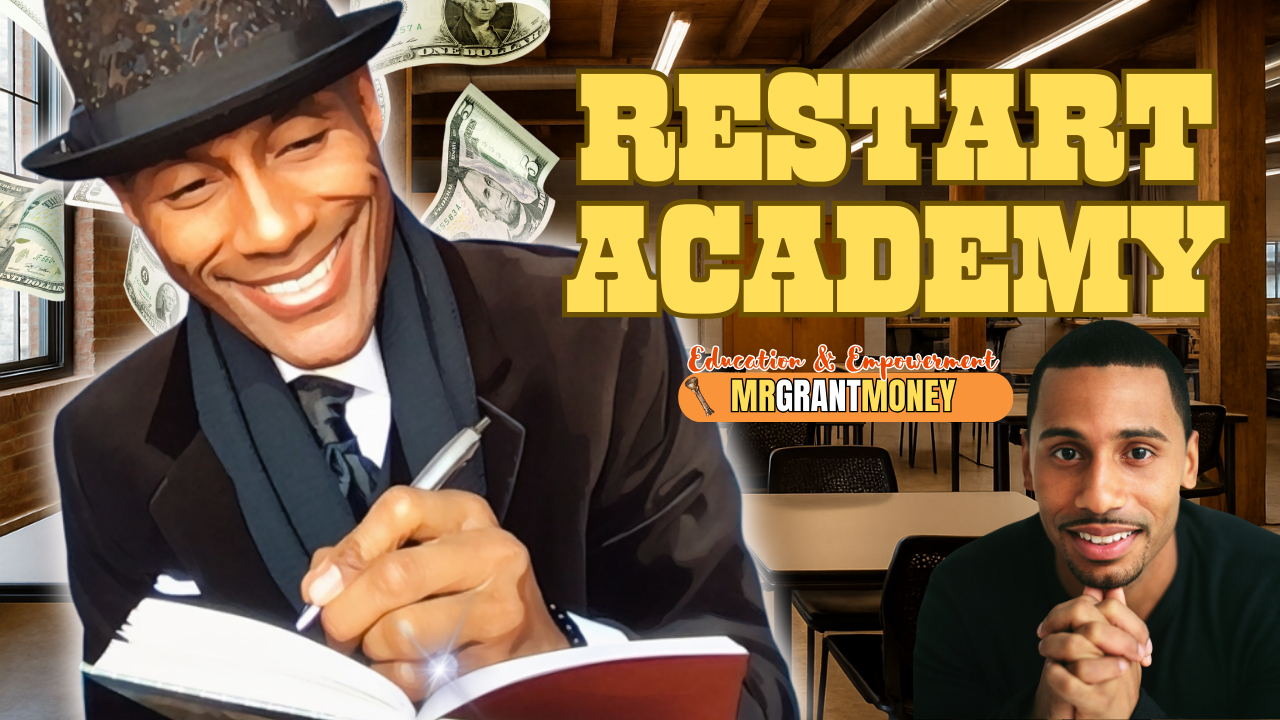The Startup Spark: Mr. Grant Money & The Inventor in a Garage


One Teenage Coder. One Game-Changing Idea. One Grant That Turned Sparks into Strategy.
What if the next billion-dollar idea doesn’t come from Silicon Valley but from a garage that smells like soldering iron and microwave burritos?
In a quiet suburb just outside Austin, that’s exactly where seventeen-year-old Diego was building something he wasn’t even sure would work.
He didn’t have venture capital. He didn’t have mentors. He didn’t even have reliable Wi-Fi. What he had was a beat-up laptop, a stack of sticky notes, and a codebase that kept crashing every time he pushed a new build.
But the idea? That was solid.
An AI-powered ed-tech platform that adapted in real time to how students learn—especially students with learning disabilities. It could read comprehension levels, flag fatigue, adjust pacing and tone—all using open-source tools and some late-night GitHub magic. No lab. No funding. Just sheer persistence.
Rejection Before Recognition
Diego showed the prototype to his teachers. They were floored. But beyond the compliments came a familiar refrain.
-
"No budget."
-
"Too experimental."
-
"Try again when you’re older."
Despite being the kind of student every educator wants—curious, resourceful, mission-driven—Diego couldn’t find institutional support. Not from the district. Not from local ed-tech circles. His age worked against him. So did his zip code.
He almost shelved the project.
Until someone forwarded him a tweet from a Houston-based tech founder. It read:
"If your idea is smart, real, and underfunded—DM me. I’ll connect you to Mr. Grant Money."
The Man Who Shows Up When Others Walk Away
Three days later, Diego stepped into a co-working space in downtown Austin. Hoodie on. Demo on a thumb drive. Palms sweaty.
And there he was.
Tailored charcoal suit. Polished leather shoes. Leather portfolio already open.
Mr. Grant Money didn’t waste time.
“I read your specs. You built this yourself?”
Diego nodded. “Garage, mostly.”
“You know how rare this is? Most people pitch ideas. You built yours. That’s why I’m here.”
He laid out the play with surgical precision:
-
A federal education innovation grant focused on neurodiverse learning tools.
-
$100,000 for prototyping, testing, and field validation.
-
A local nonprofit to serve as fiscal sponsor.
-
An ed-tech accelerator slot waiting in Chicago—if they could lock the grant.
Diego blinked. “Wait, this is… real?”
“Very real,” said Mr. Grant Money. “And very competitive. But you’re not applying alone. I’ll help you write it the way funders want to see it. You’ll lead. I’ll guide.”
What Most Young Innovators Don’t Know
What followed wasn’t magic. It was work. But the right kind of work.
Over the next three weeks, they met after school and late into the night. Mr. Grant Money helped Diego translate his code into outcomes funders would understand:
-
Learning efficiency scores
-
IEP integration potential
-
Time-to-intervention benchmarks
They outlined how his platform aligned with state digital learning priorities and federal accessibility guidelines. He brought in a UX mentor to help clean up the student interface. Introduced Diego to a local ed researcher to add credibility. And helped him prep answers to the question every young founder dreads: “Why should we trust you with this money?”
When the Spark Becomes a System
The pitch wasn’t perfect. But it was honest. And it was powerful.
The grant landed. So did the accelerator slot.
Diego flew to Chicago for the summer. Built out a team. Got his first taste of customer discovery. Returned to Texas with a product that was lighter, smarter, and ready for testing.
One year later, his platform was in early trials across five school districts. Teachers loved it. Parents emailed. Students stayed engaged longer.
And Diego? He still wore the same hoodie—but now it had a company logo stitched on the sleeve.
Fueling the Future, Not Just the Flash
This wasn’t a fluke. It was strategy.
Mr. Grant Money doesn’t just chase the buzz. He finds brilliance before it gets polished. He knows how to package it, position it, and pitch it to the right people at the right time.
His specialty isn’t just funding—it’s unlocking possibility for the builders no one else sees coming.
Because sometimes all it takes is one spark.
And someone in a sharp suit who knows exactly where to pour the fuel.
Discussion & Personal Reflection Questions
-
What does Diego’s story show us about where real innovation can come from—and why is it often overlooked by traditional funders?
-
Why was it so important that Diego built something before pitching it? How does building first change how funders respond?
-
Mr. Grant Money helped Diego navigate grants, sponsors, and an accelerator. Why is guidance just as important as funding for early-stage innovators?
-
What barriers did Diego face as a young, solo builder—and how can more support systems be built for people like him?
-
This story highlights how a single connection changed everything. How can we create more open pipelines for under-the-radar talent to access funding and mentorship?
More Resources & Related Topics:
📌 Explore more success stories 📌 Learn about grant acquisition 📌 Discover financial literacy resources 📌 Check out youth entrepreneurship 📌 Browse scholarship opportunities
🔓 UNLOCK EXCLUSIVE TIPS WITH MR. GRANT MONEY!
We hate SPAM. We will never sell your information, for any reason.
















